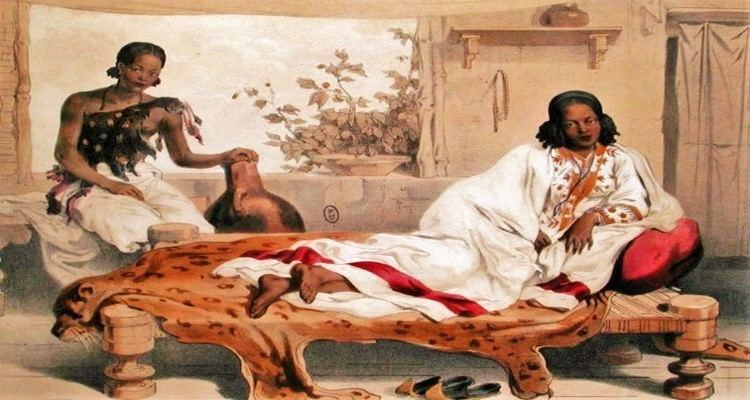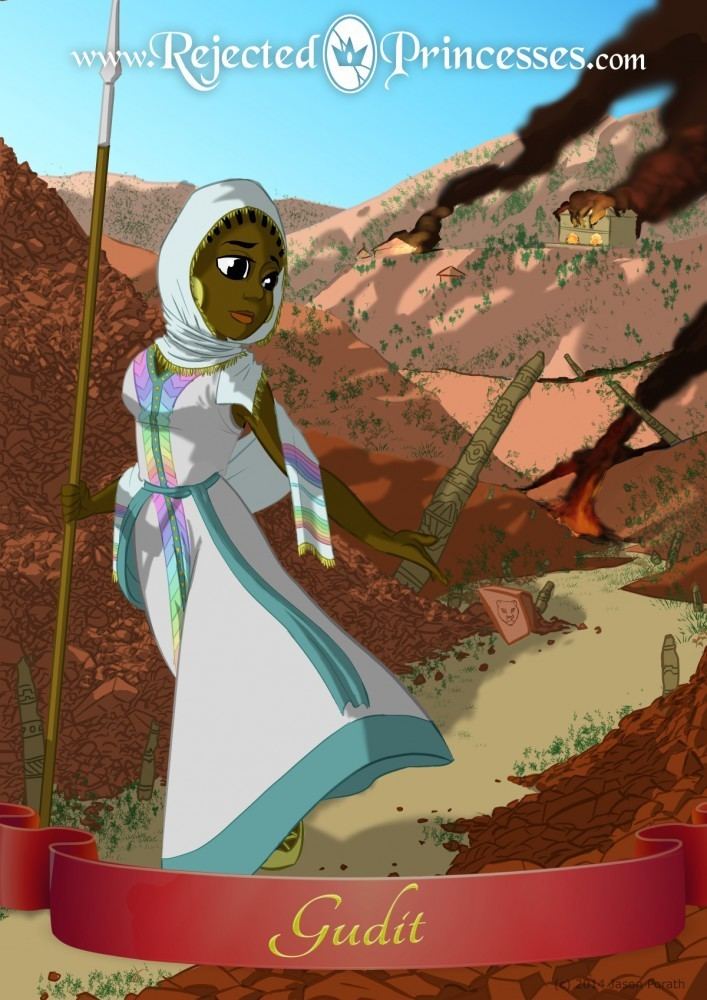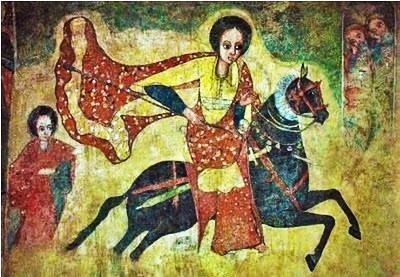 | ||
Queen gudit of ethiopia
Gudit (Ge'ez: ጉዲት, Judith) (or Yodit, or Esato, or Ga'wa), is a semi-legendary, non-Christian, Beta Israel queen (flourished c.960) who laid waste to Axum and its countryside, destroyed churches and monuments, and attempted to exterminate the members of the ruling Axumite dynasty. Her deeds are recorded in the oral tradition and mentioned incidentally in various historical accounts.
Contents
- Queen gudit of ethiopia
- Mu yodit gudit maker of ethiopia part 01 2
- Ethnicity
- Historical evidence
- Popular culture
- References

Information about Gudit is contradictory and incomplete. Paul B. Henze wrote, "She is said to have killed the emperor, ascended the throne herself, and reigned for 40 years. Accounts of her violent misdeeds are still related among peasants in the north Ethiopian countryside." Henze continues in a footnote:
On my first visit to the rock church of Abreha and Atsbeha in eastern Tigray in 1970, I noticed that its intricately carved ceiling was blackened by soot. The priest explained it as the work of Gudit, who had piled the church full of hay and set it ablaze nine centuries before.

There is a tradition that Gudit sacked and burned Debre Damo, which at the time was a treasury and a prison for the male relatives of the king of Ethiopia; this may be an echo of the later capture and sack of Amba Geshen by Ahmed Gragn. Gudit is known as ´Esato in Amharic, which means "fire". Gudit is so related to the destruction of the Axumite Empire, that the name ጉዲት in Amharic is commonly translated as "destruction".

Mu yodit gudit maker of ethiopia part 01 2
Ethnicity

Carlo Conti Rossini first proposed that the account of this warrior queen in the History of the Patriarchs of Alexandria, where she was described as Bani al-Hamwiyah, ought to be read as Bani al-Damutah, and argued that she was ruler of the once-powerful kingdom of Damot, and that she was related to one of the indigenous Sidamo peoples of southern Ethiopia. This would agree with the numerous references to matriarchs ruling the Sidamo polities.
If Gudit did not belong to one of the Sidamo peoples, then some scholars, based on the traditions that Gudit was Jewish, propose that she was of the Agaw people, who historically have been numerous in Lasta, and a number of whom (known as the Beta Israel), have professed an Israelite pre-Ezra Judaism since ancient times. If she was not of Hebrew, Israelite or Jewish origin, she might have been a convert to Judaism by her husband, known as Zenobis, son of the King of Šam-one of the names of Syria- or pagan. Local traditions around Adi Kaweh where she allegedly died and was buried indicate her faith was pagan-Hebraic,rather than Israelite or Jewish [Leeman 2009].
Historical evidence
It was during the office of Patriarch Philotheos of Alexandria when Gudit started her revolt, near the end of the reign of the king who had deposed the Abuna Petros. As Taddesse Tamrat explains, at the time "his own death in the conflict, and the military reverses of the kingdom were taken as divine retribution for the sufferings of Abuna Petros."
This chronological synchronicity with the tenure of Patriarch Philotheos, and the intervention of king Georgios II of Makuria, provides us a date of c.960 for Gudit. A contemporary Arab historian, Ibn Hawqal, provides this account:
The country of the habasha has been ruled by a woman for many years now: she has killed the king of the habasha who was called Haḍani [from Ge'ez haṣ́ani, modern aṣ́e or atse]. Until today she rules with complete independence in her own country and the frontier areas of the country of the Haḍani, in the southern part of [the country of] the habashi.
Another historian mentions that the king of Yemen sent a zebra to the ruler of Iraq in 969/970, which he had received as a gift from the Queen of al-Habasha.
Taddesse Tamrat has speculated that one effect of Gudit's otherwise ephemeral rule, might be the pockets of various languages related to Amharic scattered across southwestern Ethiopia (e.g. Argobba, Gurage and Gafat), which could have been Axumite military settlements isolated by her conquests and later Sidamo migrations.
Popular culture
She appears in the expansion The African Kingdoms for the HD Edition of the game Age of Empires II, available exclusively on Steam.
